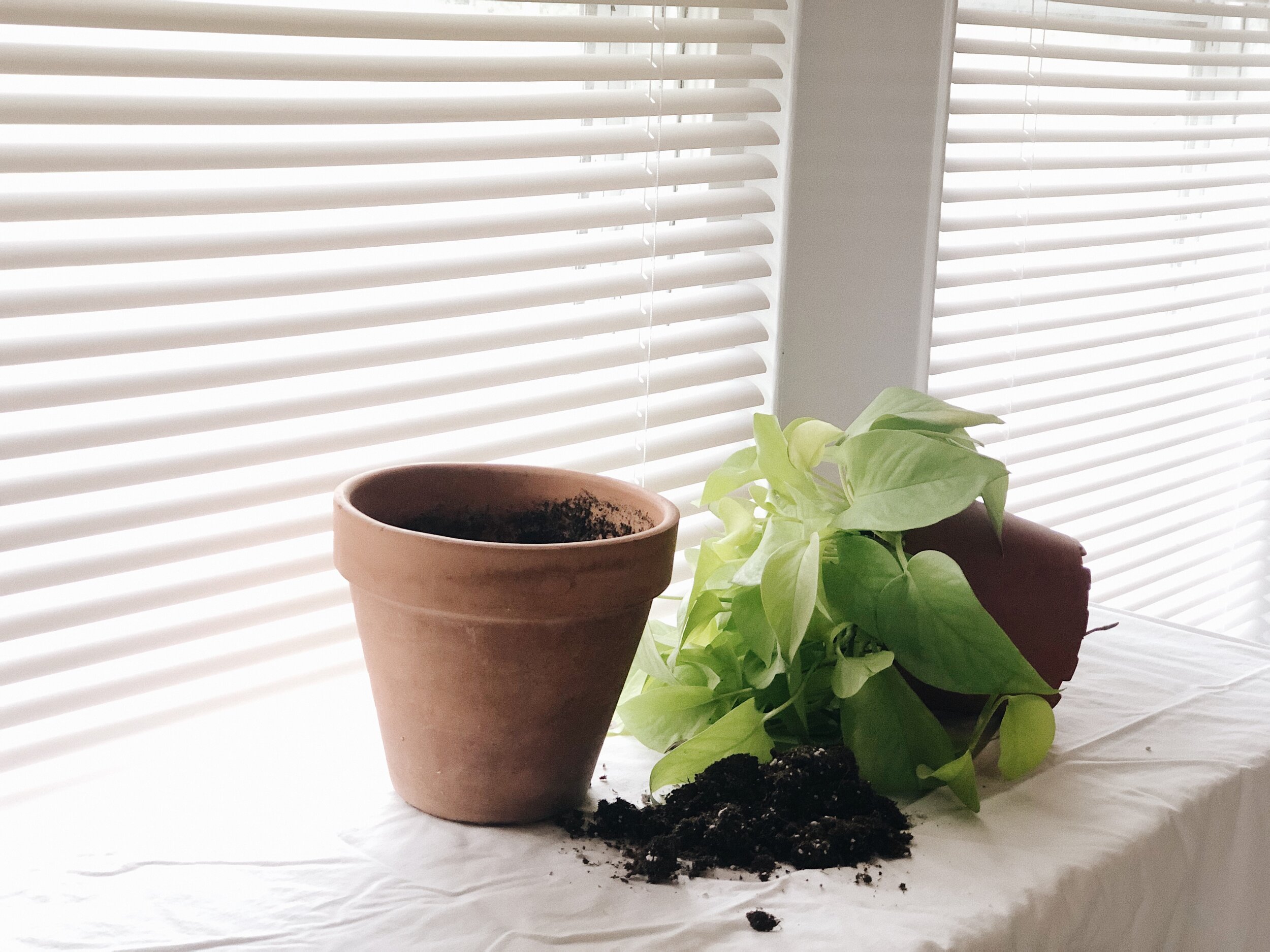
B L O G
5 Ways To Attract Pollinators To Your Garden
The birds, the bees… and the butterflies: these are just a FEW of the many pollinators on this earth that serve such a secretly beneficial and beautiful purpose on this earth. But why do we need to make an effort to attract them to our gardens? Here are 5 ways to attract pollinators to your garden.
The birds, the bees...
and the butterflies: these are just a FEW of the many pollinators on this earth that serve such a secretly beneficial and beautiful purpose on this earth. But why do we need to make an effort to attract them to our gardens? Because pollinators are responsible for three-quarters of the world's food crops and many of the foods that we enjoy on a daily basis would not be existent without them. Because plants can not exist without the process of pollination. And plants are what's responsible for the air that we breathe and the food that we eat. So yes, pollinators are extremely important, because without them, our life as we currently know it, would not be.
Did you know…
+ that some bees travel up to 3 miles just to visit your flower garden?
+ that hummingbirds can visit up to 1000 flowers each day?
Crazy, right? And with all of this work that they do, they need our help, and there are some things that we can do to give them an extra boost to their day.
So here are five tips on how to attract
pollinators to your garden:
p l a n t a n a t i v e g a r d e n
A native garden is basically just a garden filled with plants that are naturally found growing in your region. For example, honeysuckle is a naturally occurring shrub/bush that grows here in North Carolina, so adding that to your garden this spring/summer would greatly benefit your pollinators!
Also, some bees are what's called "specialists", meaning that they can only feed their larvae the pollen from a specific native plant. So without these plants, the bee colony would not survive.
If you're wanting to attract more hummingbirds, aim for tubular and long shaped blooms with your flower choices, something like Daylillies or Petunias.
c h o o s e t h e c o l o r
Did you know that these hard working species are actually attracted to certain colors?
To attract bees… bees LOVE purple and blue flowers. Some great options, that we do carry at Garden Valley Market, would be Lavender, Petunias, and Verbena.
To attract Hummingbirds + Butterflies… we recommend colors of red, yellow, pink, and orange! Butterflies LOVE Lantana, and Hummingbirds love Petunias, Fuscia, and Lillies!
p r o v i d e w a t e r + r e s t
With how hard working these pollinators are, you better believe that they need a place to rest and refuel, and providing these places for them to do so is going to keep them coming back! They all need a place of still water to drink from. You can add some pebbles to a bird bath to make a great landing place for the insects so they won't drown.
a v o i d i n s e c t i c i d e s
Did you know that insecticides actually kill pollinators? KEEP So you might be TRYING to kill those pesky bugs eating your plant, but you're actually harming those beautiful butterflies and busy bees in the process. And insecticides are one of the reasons that the bee population has decreased to greatly!
So instead of going to insecticides first, try and google some natural alternatives and see if those work first. (There are also great organic options online that are safe for the environment, as well as pets and humans.)
k e e p t h e w e e d s
It’s early spring and we’re super excited to get our lawns looking fresh and green again… but maybe think twice about removing those dandelions and other weeds growing! Because these weeds are often the first flower that the pollinators source from when not many blooms have started yet! Instead, let them grow a tad bit longer until your garden starts coming along.
Let us know how you attract pollinators to your yard by commenting below!
We have MANY varieties of flowers for you to choose from at our stores, and a unique and beautiful selection of different shapes and colors. So come get your beautiful flowers grown just for your pollinators at home.
Thank you so much for joining us here. For more information on what Garden Valley Farmers Market is about, you can visit us here. If you’re wanting to visit with us, come by any of our five North Carolina locations. If you’re wanting to follow along with us, you can do so either on our Facebook, Youtube, or our Instagram. And if you’re wanting to check out our other recipes and blog posts, or are needing more inspiration, follow us on our Pinterest. We’d love to have you join us in our journey of planting better, eating better, and living better.
Much love,
Your Garden Valley Farmers Market Team
How and When to Repot Your Houseplant
How many times have you looked at your houseplant and said, “You need something”, but aren’t sure what that something is? Odds are, you might need to repot your beautiful plant. Read all about how and why you need to repot your houseplant with this detailed post.
Items Needed
Pot with drainage hole that is 1 to 2 inches bigger (no bigger than 2)
Good quality indoor potting mix
Water
How to Repot Your Houseplant
1. Water your plant the day before, that way your soil and roots are easier to remove from the pot. It also helps reduce “shock” to your plant during transplant day
2. Gently pull out your plant from pot. Depending on it’s size, you may need to tilt the pot upside down, being careful not to drop it. You might need a friend for this depending on how big your pot is. If your plant is extremely root bound, you can take a knife and glide it around the inside of the pot to loosen the roots.
3. Once your plant is outside of its original pot, gently work your fingers along the roots of the plant. This is also where you would inspect your plant and cut off any brown or black roots caused by overwatering.
4. Fill the bottom of the pot with an inch of your indoor potting mix. Gently place your plant into the pot and fill the perimeter with soil.
5. Gently press your hand down on the soil once it has reached the top. This makes sure that all areas have been covered with soil and that there are no air pockets hiding.
6. Water lightly so that the soil is wet but not drenched.
*If your plant seems to be going through a period of “shock”, it’s perfectly normal. Give it about a week, and you’ll see that it will be thriving once again and more vibrant than before.
When To Repot
+You have plant babies. Over time, plant babies can tend to grow along with the mother plant. Which is GREAT! It means that your plant is thriving. But if your mother plant is competing for nutrients with the baby plants, it can stress the overall plant out.
+You have roots growing out the bottom of your pot. Congratulations, because this means it has been thriving, and just needs more room to grow, and a fresh repotting can do tremendous amounts of good for your plant.
+It just seems “blah”. No matter what you do, (i.e. watering correctly, correct sunlight, or even talking to it) it just seems to be a little down. It might need some fresh soil to provide it with more nutrients. It can’t survive on just that original batch of soil alone.
+You have to water more frequently. If your soil seems to be drying up quicker than before, it might be time to repot and give that plant some love. With better soil composition comes better water absorption, which means a much happier plant in return.
+Root rot. If your plant’s roots are turning black or brown, it’s definitely time to repot your plant. Along with repotting, cut off the damaged portion of your plant’s roots, and this will help save the entire plant from suffering the damage. Also, maybe lighten up on the watering once your plant has it’s new “home”.
Thank you so much for joining us here. For more information on what Garden Valley Farmers Market is about, you can visit us here. If you’re wanting to visit with us, come by any of our five North Carolina locations. If you’re wanting to follow along with us, you can do so either on our Facebook, Youtube, or our Instagram. And if you’re wanting to check out our other recipes and blog posts, or are needing more inspiration, follow us on our Pinterest. We’d love to have you join us in our journey of planting better, eating better, and living better.
Much love,
Your Garden Valley Farmers Market Team



















